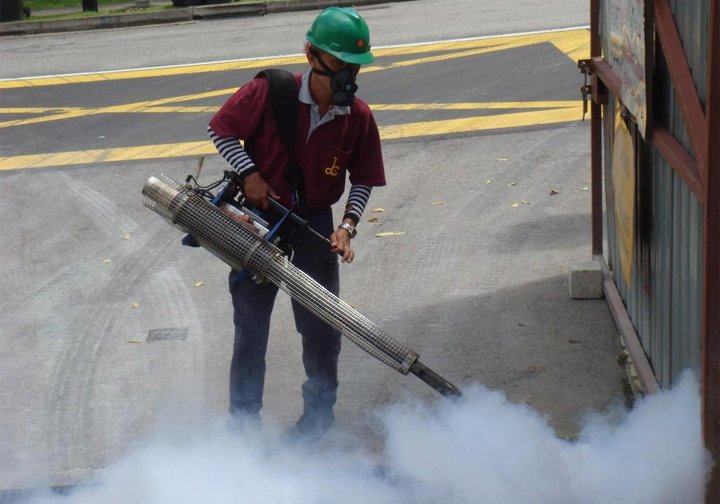According to the Centers for Diseases Control and Prevention (CDC), in 2011, companies in the United States spent approximately 45 to 54 billion dollars on costs associated with work-related musculoskeletal disorders (MSD) in 2011. Research conducted by the Bureau of Labor Statistics confirmed that MSDs were the single largest category of workplace injuries, and was responsible for almost 30 percent of all workers’ compensation costs.

Fortunately, musculoskeletal disorders are preventable. However, developing an effective and efficient prevention strategy requires an understanding of what these disorders are and the risk factors that contribute to their development.
What Are Work-Related Musculoskeletal Disorders?
According to the National Institute for Occupational Safety and Health (NIOSH), a work-related MSD is an injury of the muscles, tendons, ligaments, nerves, joints, cartilage, bones, or blood vessels in the arms, legs, head, neck, or back that is caused or aggravated by work tasks such as lifting, pushing, and pulling.
Symptoms include pain, stiffness, swelling, numbness, and tingling.
What Are the Most Common Types of Work-Related Musculoskeletal Disorders?
1. Work-Related Upper Limb Musculoskeletal Disorders
Work-related upper limb musculoskeletal disorders can affect any region of the neck, shoulders, arms, forearms, wrists, and hands.
The most common work-related upper limb musculoskeletal disorders by upper limb region are:
- Neck: Tension Neck Syndrome and Cervical Spine Syndrome
- Shoulder: Shoulder Tendinitis and Shoulder Bursitis
- Elbow: Epicondylitis and Radial Syndrome
- Wrist/Hand: Trigger Finger, Carpal Tunnel Syndrome, and Hand-Arm Syndrome
2. Low Back Work-Related Musculoskeletal Disorders
Low back work-related musculoskeletal disorders are associated with spinal disc problems, and muscle and soft tissue injuries. These disorders often arise due to strenuous physical work, where static and awkward postures, repetitive motion, and whole-body vibration are present.
3. Work-Related Lower Limb Musculoskeletal disorders
Work-related lower limb musculoskeletal disorders affect the hips, knees, and legs. Workers who are most at risk of developing work-related lower limb musculoskeletal disorders are those whose job task requires them to work over a long period in standing or kneeling positions, as well as those that include repetitive kneeling or squatting, and frequent jumping from a height.
The most common work-related lower limb musculoskeletal disorders by lower limb region are:
- Hip/Thigh: Osteoarthritis, Hamstring Strains, and Sacroiliac Joint Pain
- Knee/Lower Leg: Osteoarthritis, Bursitis, Pre-patellar Tendinitis, Shin Splints, Infra-patellar Tendinitis, and Stress Fractures
- Ankle/Foot: Achilles Tendinitis, Blisters, Foot Corns, Bunions, Hammer Toes, Sprained Ankle, Stress Fractures, and Varicose Veins
What Are the Risk Factors for Musculoskeletal Disorders?
The main cause of musculoskeletal disorders development is exposure to risk factors. Exposure to risk factors causes workers to become fatigued, which, in turn, reduces the body’s capability to recover. This eventually results in musculoskeletal imbalances, which increases the risk for the development of MSDs.
The risk factors can be divided into three main categories: work-related risk factors, organizational and psychosocial risk factors, and individual risk factors.
1. Work-Related Risk Factors
There are four primary work-related or ergonomic risk factors:
Force
This is the amount of effort that a worker’s body requires to perform job tasks, which involve carrying, lifting, pulling, or pushing. If the amount of force exceeds the worker’s bodily capabilities, the risk of injury increases.
Repetition
This involves the repeated use of the same group of muscles or the same continuous motion around a joint. The time taken to complete one cycle of the job task is less than a few minutes, but cycles are performed continuously for up to 2 hours.
Posture
A worker’s body is most efficient when it is in a neutral posture. Working for extended periods in postures out of the body’s natural alignment is known as awkward postures, and these put stress on the body thereby increasing the risk for musculoskeletal disorders.
Awkward postures include bending, twisting, and extended reach. Static postures are those that are maintained for an extended period of time to perform a particular job task. This causes the muscles to become fatigued as a result of constantly contracting to hold the position, and this increases stress on the body also increases the risk for musculoskeletal disorders development. Static postures include gripping and tilting the head.
Vibration
Direct contact with vibrating machinery, tools, and equipment transfers vibrations or energy to the part of the worker in contact with the source. Repeated exposure to hand-arm vibration or whole-body vibration can affect blood vessels, leading to musculoskeletal disorders development
2. Organizational and Psychosocial Risk Factors
Organizational and psychosocial risk factors include:
- Lack of work breaks
- Working under pressure or with deadlines
- Poor job design
- High work demands
- Lack of social support from colleagues and supervisors
- Job insecurity
These factors lead directly to stress, and that stress can result in increased muscle tension and other stress-related changes to the body, making workers more vulnerable to developing MSDs.
3. Individual Risk Factors
Individual risk factors include:
- Age: The functional capacity of soft tissue, muscle strength, and resistance to stress decrease with age.
- Gender: Research has shown that the prevalence of work-related MSDs is higher among women. This could be due to the fact that women are typically employed in tasks involving a combination of biomechanical and psychosocial factors. The gender difference has also been linked to exposure to constraints at home, such as housework and childcare.
- Health and Lifestyle: Workers who smoke, drink excessively, or are obese are at a higher risk of MSDs and other chronic conditions.
Prevention Is the Best Treatment
Work-related musculoskeletal disorders can be caused by multiple risk factors, whether they’re biomechanical, organizational and psychosocial, or bio-behavioral in nature. Your prevention strategy should, therefore, take an integrated, holistic approach. According to the European Agency for Health and Safety at Work, this means that preventive strategies should be taken at three levels:
- Primary prevention with a combined focus on the risk assessment process and implementation of technical, organizational, and person-oriented measures
- Secondary prevention targeting early identification and intervention; and
- Tertiary prevention aiming to stimulate and facilitate the return-to-work process of workers being absent from work due to a musculoskeletal disorder



